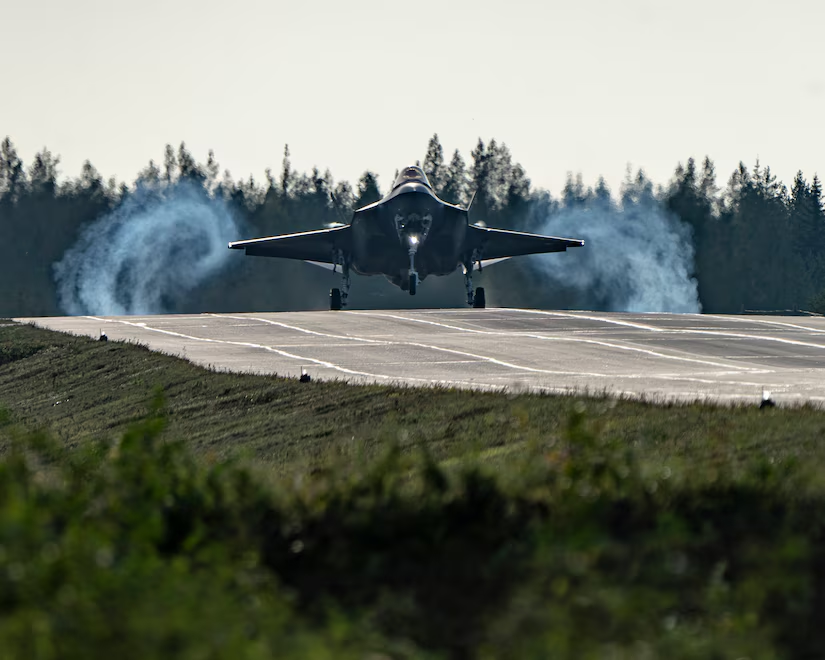The United States must increase spending to levels not seen since the Cold War to deter the threats of China, Russia, Iran and North Korea, said the leaders of a bipartisan commission examining the National Defense Strategy.
Former Congresswoman Jane Harman chaired the effort with Ambassador Eric Edelman as the vice chair. They spoke to the Defense Writers’ Group on Tuesday highlighting the conclusions of the congressionally chartered commission.
Harman said the United States is facing the most serious and challenging threats since the end of World War II, and Americans are not prepared to face those threats.
This conclusion mirrors the 2018 commission report. “In the 2018 report, we concluded that if trends didn’t change, the United States could find itself on the losing end of a conflict,” Harman told reporters. “When we got together for this report … [we] began to realize that the situation was even worse than it was in 2018 and that we were at the risk of having our authoritarian adversaries outpace us and that we really run the risk of … a global conflict because of the incredibly dangerous international situation that we face.”
The commission members discussed a rethinking of the definition of security in an interconnected world and a massive change in the way Americans think of innovation. They also concluded that the United States needs to dedicate more resources to defense due to the scale of the challenge ahead.
“We have been optimizing a system for acquiring extremely expensive, vulnerable platforms that we can’t afford to lose right when we’re on the cusp of a huge revolution in warfare,” Edelman said. “The Pentagon builds to the speed of bureaucracy. That’s not an industrial base or a business model that’s going to sustain us.”
The report looks to bring together the Pentagon and the greater tech community to spur innovation at scale. Edelman pointed to the Defense Innovation Unit, the Department of Defense’s Strategic Investment Office, and the Replicator initiative championed by Deputy Defense Secretary Kathleen Hicks. These are the right ideas, but they are way too small, Harman and Edelman said. Replicator, for example, will build tens of thousands of drones. Ukraine and Russia are using millions of drones. Edelman said any conflict in the Indo-Pacific would dwarf those numbers.
The commission called for a review of the systems in United States’ inventory with an eye to their use on the battlefield. These systems should be agile, interoperable and survivable, Harman said. DOD should be empowered “to cancel programs, determine needs for the future, and invest accordingly,” the report says.
The commission also recommends rebuilding the defense industrial base that has atrophied since the end of the Cold War. Edelman noted that China has 10 shipyards building vessels for their navy. “We’ve got kind of 1 1/2 [shipyards],” he said.
The problems run far beyond mere cost. Edelman pointed to the new Sentinel missile system. This is one of the legs of the nuclear triad and will modernize the U.S. ground-based deterrent. The program is in Nunn-McCurdy breach right now, which means it’s over budget and delayed. “Is it because Northrop Grumman … doesn’t know how to make an intercontinental ballistic missile … on time and on schedule?” Edelman asked. “No, that’s not the issue.”The issue is pouring highly specialized reinforced concrete to create the control rooms and silos for the new missiles,” he said. “We don’t have enough people to do that in the Upper Midwest, where all of this is going to be located.”
There are not enough welders or electricians or pipefitters for many of the projects or systems or infrastructure DOD needs. “We have to look at our educational system to produce the kind of workforce we need to be able to sustain the effort that’s going to be required,” Edelman said. “This sort of human investment will take time, possibly the most precious resource.”
The U.S. has no shortage of energy, innovation, knowledge and more once it has been awakened. Unfortunately, this usually happens only after a crisis. Edelman pointed to the U.S. response to the attack on Pearl Harbor in 1941, the U.S. military answer to Task Force Smith in Korea in 1950, the Soviet launch of Sputnik in 1957, and the unified response to the attacks on Sept. 11, 2001. “Wouldn’t it be nice to do this before there is a crisis?” Harman asked.
“It is expensive to defend the United States of America, but what we’re talking about in this report is restoring our ability to deter conflict, and failure to deter conflict is always more expensive than spending the money that’s necessary to deter and defend,” Edelman said. “Our effort has been to try and create a moment of national discussion before the fact, rather than waiting till after the fact when it will cost more.”





